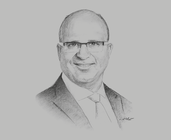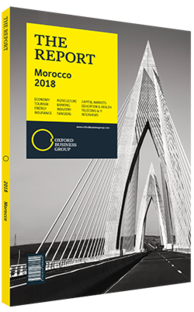Marc Nassif, CEO, Groupe Renault Morocco: Interview

Interview: Marc Nassif
How has Morocco’s status as an industrial hub evolved over the last two decades?
MARC NASSIF: The automotive ecosystem began in the 1960s with our plant in Casablanca. Since the launch of the Tangiers plant project in 2007, the industry has seen a strong acceleration. With a combined output of more than 376,000 units in 2017, most of our production is exported. Today, with all these facilities and production forces, Renault Morocco’s exports represent 10% of Groupe Renault’s global car sales. Needless to say, these figures highlight Morocco as a major player in the regional automotive industry.
His Majesty King Mohammed VI positioned the northern region of Morocco as a gateway to Europe and a door to the rest of Africa. The strength of Tangiers is built on the development of an ecosystem that includes infrastructure, free zones, roads, railways, clean energy and port facilities. The plant and the port are connected by a railway link, and a 25-km link connects the free zone and the plant. It is an undeniable asset.
What steps can automotive manufacturers take to increase local content of vehicles?
NASSIF: At Renault, we are on track to reach a 65% local integration rate by 2023, a target we agreed to in April 2016. We strongly encourage the development of existing suppliers through an increase of their production capacity in order to meet growing demand from Moroccan factories and the alliance. Their development is also supported by the introduction of new technologies and their production within existing sites. Finally, the establishment of new suppliers in the kingdom was illustrated by the signatory in December 2017 of numerous investments in the implementation and development of Renault’s ecosystem in the presence of His Majesty King Mohammed VI. The sector’s target is to produce 650,000 cars in Morocco by 2020. This will contribute to attracting more suppliers and strengthen Morocco’s position as an automotive industrial hub.
How are the public and private sectors collaborating to satisfy the demand for skilled workers?
NASSIF: Much has been done in recent years. In 2012 the Automotive Industry Training Institute (Institut de Formation aux Métiers de l’Industrie Automobile, IFMIA) – a public-private partnership between Renault and the Moroccan state – opened its doors to students in order to directly address the need for a qualified workforce. By the end of 2017, the IFMIA had held more than 1.5m hours of training, and we are working to drive new and concrete skills, including more research and development investment that is required to spur competitiveness in automation, stamping and drilling.
What are the prospects for electric vehicles (EVs)?
NASSIF: Although the most successfully sold EV in Europe is the Renault Zoe – with a component supplied by one of our partners here in Morocco – the question of production aptitude is less a matter of manufacturing capabilities and is more about a lack of market demand. The current economic model behind EVs is not yet sustainable in Morocco, due to a lack of incentives and infrastructures. Nevertheless, Morocco’s 2030 target is to increase renewables’ share of energy production to 52%, thus EVs continue to be a promising future option. On a global scale, we must point out that we are driven by the new Renault strategic plan, which is called “Drive The Future”. It will deliver profitable, sustainable growth in a rapidly changing industry. In a nutshell, over the next six years, we aim to exceed €70bn in revenues with a more than 7% operating profit margin at the end of the plan.
In the meantime, we intend to remain the number-one provider of affordable, mass-market EVs. We will also improve our competitiveness by leveraging on the alliance scale; these synergies will contribute to reducing EV motor and batteries costs over the course of the plan. We strongly believe that EVs are part of the solution for cleaner air in our cities.
You have reached the limit of premium articles you can view for free.
Choose from the options below to purchase print or digital editions of our Reports. You can also purchase a website subscription giving you unlimited access to all of our Reports online for 12 months.
If you have already purchased this Report or have a website subscription, please login to continue.

